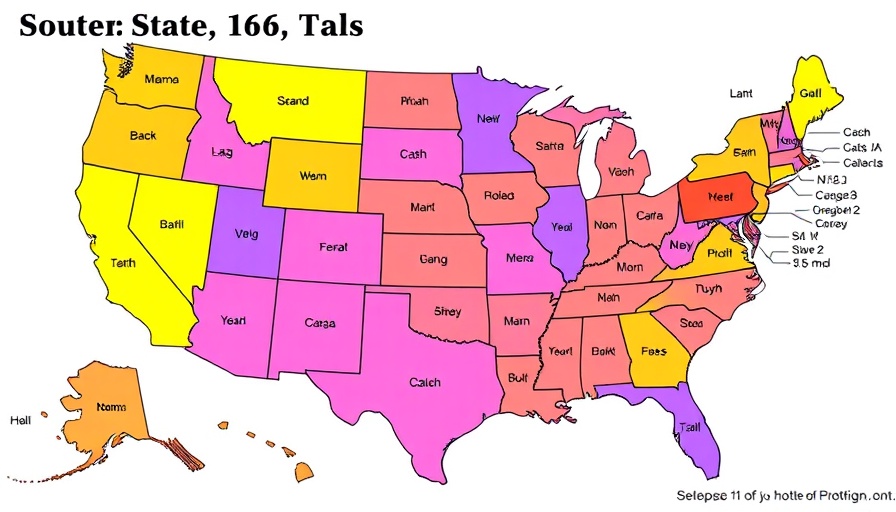
Understanding Sales Tax Rates in 2025: A Guide for Businesses
As we move further into 2025, understanding the sales tax landscape becomes crucial for CPAs and small to medium-sized businesses across the United States. Sales tax is not merely a financial obligation; it's a significant contributor to both state and local revenues, impacting pricing strategies and consumer behavior. With much at stake, staying informed about current rates can offer businesses a strategic edge.
Overview of Sales Tax Contributions
Sales taxes serve as a backbone for state revenues, responsible for 32% of state tax collections and 13% of local tax collections. Given their importance, businesses must grasp how these tax structures operate within their jurisdictions. The reality is that sales taxes often impact consumers more directly than income taxes, which means businesses need to navigate these waters with precision.
The Importance of Local and State Dynamics
Diving deeper, 45 states impose statewide sales taxes, while 38 states apply local sales taxes. Notably, Alaska stands out by forgoing a statewide sales tax but allowing localities to impose their own rates. This dual system means that businesses must track both types of taxes to ensure compliance and competitiveness. Significant differences between statewide and local rates can lead to a cumbersome compliance process for businesses operating in multiple jurisdictions.
Analyzing Sales Tax Rate Extremes
When it comes to sales tax rates, differences are dramatic. For instance, Louisiana ranks highest with an average combined state and local rate of 10.12%, while Alaska is at the opposite end of the spectrum with a mere 1.82%. Understanding where your business sits within these extremes can help you set appropriate pricing and marketing strategies. A high sales tax can dissuade customers, while a lower rate might attract shoppers from neighboring states.
The Power of Sales Tax Bases
The sales tax base—what exactly is taxed—also plays a critical role in determining how much revenue a state collects and how the overall economy is affected. Broadening the base means taxing more goods and services, which can allow for lower rates overall, thus making it easier for consumers and businesses alike. On the other hand, states that apply narrow definitions may face challenges such as budget shortfalls or inequitable burdens on certain sectors.
Sales Tax and Consumer Behavior
Sales tax rates can directly influence consumer shopping habits. When faced with higher taxes, consumers often seek alternatives, such as shopping across state lines or turning to online sales. This shift not only affects sales volumes for local businesses but also has broader implications for state revenues. As such, businesses should consider incorporating competitive pricing and online engagement strategies into their operational models.
Future Trends in Sales Tax Regulation
What does the future hold for sales tax regulations? As e-commerce continues to grow, so too will the scrutiny on tax collection practices at state and local levels. Policymakers are increasingly interested in digital products and services—and how sales taxes can be adjusted to fit this new landscape. Businesses should prepare for potential changes and remain flexible in their financial strategies to adapt to evolving regulatory environments.
Conclusion: Preparing for Change
As we navigate through 2025, understanding sales tax is more critical than ever for CPAs and businesses. Keeping abreast of current rates allows for better forecasting and planning—essential qualities in today’s fast-paced markets. The sales tax landscape is complex, but with the right knowledge and tools, companies can both comply with regulations and thrive in their respective industries.
 Add Row
Add Row  Add
Add 




Write A Comment